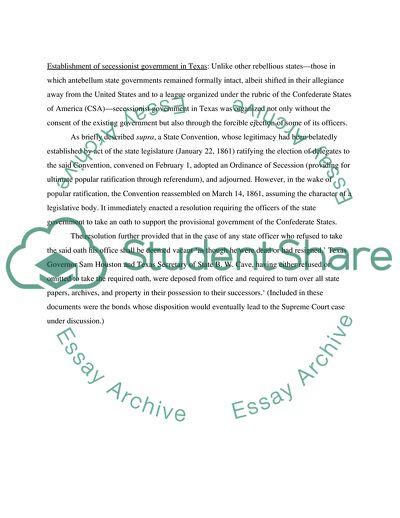Cite this document
(Texas v White Case of 1869 Study Example | Topics and Well Written Essays - 2000 words, n.d.)
Texas v White Case of 1869 Study Example | Topics and Well Written Essays - 2000 words. Retrieved from https://studentshare.org/law/1728426-research-essay-on-supreme-course-case-texas-v-white-1869
Texas v White Case of 1869 Study Example | Topics and Well Written Essays - 2000 words. Retrieved from https://studentshare.org/law/1728426-research-essay-on-supreme-course-case-texas-v-white-1869
(Texas V White Case of 1869 Study Example | Topics and Well Written Essays - 2000 Words)
Texas V White Case of 1869 Study Example | Topics and Well Written Essays - 2000 Words. https://studentshare.org/law/1728426-research-essay-on-supreme-course-case-texas-v-white-1869.
Texas V White Case of 1869 Study Example | Topics and Well Written Essays - 2000 Words. https://studentshare.org/law/1728426-research-essay-on-supreme-course-case-texas-v-white-1869.
“Texas V White Case of 1869 Study Example | Topics and Well Written Essays - 2000 Words”. https://studentshare.org/law/1728426-research-essay-on-supreme-course-case-texas-v-white-1869.


